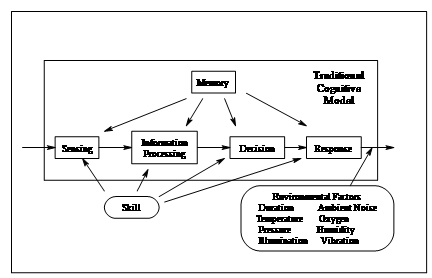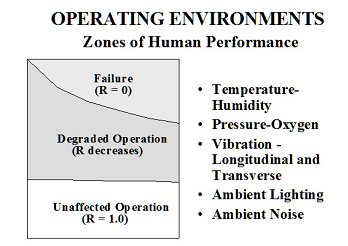IEEE Reliability Society Newsletter Vol. 62, No. 4, November, 2016
Front page:
Society Announcements:
Members & Chapters:
Dallas Chapter Activities:
Italy Chapter Activity:
Article:
RS Events & News:
Links:
Human Reliability in System Design, Operation, and Support
Kenneth P. LaSala, Ph.D. |
Despite advances in automation, there is a continuous need to examine the roles and impacts of humans in systems and both industrial and business processes. Furthermore, the attention to the human element should begin with the inception of design and continue through operation and support. Ideally, the team that develops a system or process should include members with reliability and human factors expertise. Actively considering the human element beginning in design has both operational and economic benefits.
Significant operational benefits can result from considering the impact of humans. Few people are aware that a significant number of operational failures are due to human errors. One sees the consequences of human error in aviation in the form of accidents and near misses – “incidents.” The consequences of human errors in automobiles and trucks are well known. Similarly, the impact of human errors in other modes of transportation, such as rail, is well publicized. In medicine, human errors can be life threatening. However, what is less well recognized is the operational impact of human errors in manufacturing. For example, in-plant errors in automotive assembly also can be life threatening. For consumer products, improper design for humans can result in the loss of life or injury with attendant expensive product liability lawsuits. The petroleum industry recognizes the significance of human reliability and human errors, in particular:
- Human performance difficulties are consistently identified as root causes of accidents and dangerous occurrences.
- This pattern of repeated human performance difficulties suggests that corrective actions may not be targeted appropriately and so may be ineffective in preventing future accidents and dangerous occurrences.
- A thorough exploration of the human factors contribution to accidents and dangerous occurrences is dependent upon a clear understanding of where human error fits within the chain of event causation.
- Popular root cause analysis tools may not provide a sufficiently thorough analysis of human factors contributions to event causation.
- In-depth analysis of the human factors contributions to accidents and dangerous occurrences can lead to the development of more effective corrective actions.
Severe economic liabilities are associated with neglecting the human element. Human errors in manufacturing result in rework costs. Assembly problems due to human error, if they are not life threatening, can increase product costs and delay deliveries. In consumer products, both durable and disposable, inadequate design for the human element negatively affects customer satisfaction and consequently producer competitiveness. Recognizing that human errors affect competitiveness, as well as customer satisfaction and well-being, some companies have been persuaded to dedicate programs to the systematic reduction of human errors.
Part of addressing the need to consider the human is resolving the management and “cultural” issues associated with merging the human-oriented engineers with hardware and software engineers. Factors that affect human performance tend to be taught only to psychologists and, to a lesser degree, industrial engineers. Other engineers, especially reliability engineers and system engineers, must develop sensitivity to human errors either by “osmosis” or unpleasant experiences. Consequently, a communications gap frequently exists between the human-oriented staff and the remainder of the staff. This gap can be eliminated in two ways:
- Improve communication between human factors experts and other design staff members by using multi-disciplinary teams and by cross-training human factors experts, reliability engineers, and other engineers
- Improve awareness of project and corporate management.
For the reliability engineer, the cognitive model is the most convenient model to use for evaluating the reliability of the human. Figure 1 illustrates the basic cognitive model plus some other influences.

Figure 1. The Cognitive Model Plus Other Influences
(Adapted from Reliable Human-Machine Systems Developer Training Course, KPL Systems, 1997)
The basic cognitive model consists of long- and short-term memory, a sensing function, an information processing function, a decision function, and a response function. With the exception of memory, the skill level of the human affects all of the functions in the cognitive model. Time and environmental factors also affect the overall task performance response. Three aspects of the cognitive model are worth noting:
- Data can be obtained in some form for the sensory and motor elements of the cognitive model
- Information processing and decision models can be applied
- The cognitive model “plugs” very nicely into reliability block diagrams and fault trees (as bottom events).
While there are some systems of human reliability data, generally they are case-specific and not especially usable over a wide range of situations. However, Figure 2 shows a means by which to interpret human performance data with respect to environmental factors for reliability purposes.

Figure 2. Zones of Human Performance and Human Reliability
Within this zone concept, one can estimate reliability by using models that have three principal advantages over using case-specific data for an unrelated case:
- They follow a logical reliability interpretation of human factors data.
- They can be used in a wide variety of circumstances.
- They can be integrated easily into conventional reliability block models.
That said, such models have the following disadvantages:
- They are approximations.
- Although they can be used to advantage in the design process, they should not be used for contractual compliance demonstration unless accepted by the customer.
- They yield reliability values for a human function but not means such as MTBF.
This article has provided only a “sketch” of a practical approach to integrating human reliability into system and process development. Much more information about this approach, including details on performing human reliability calculations, can be found in A Practical Guide to Developing Reliable Human-Machine Systems by the author of this article. It is available from Quanterion Solutions, Inc. at https://www.quanterion.com/. For additional information, the author should be contacted at kplsys@verizon.net.